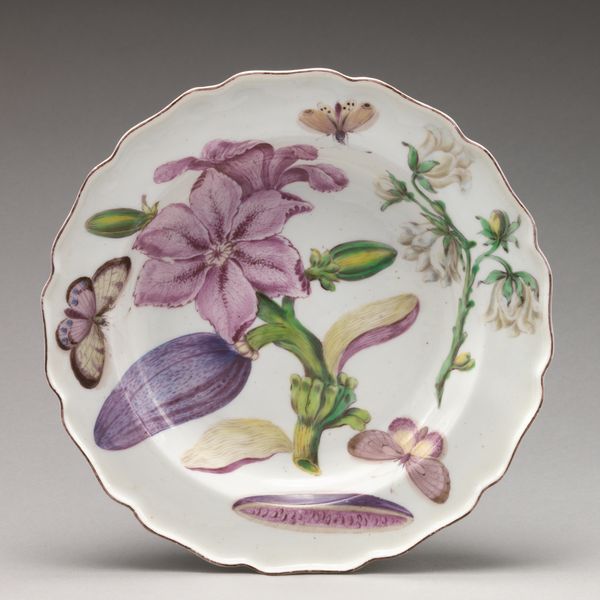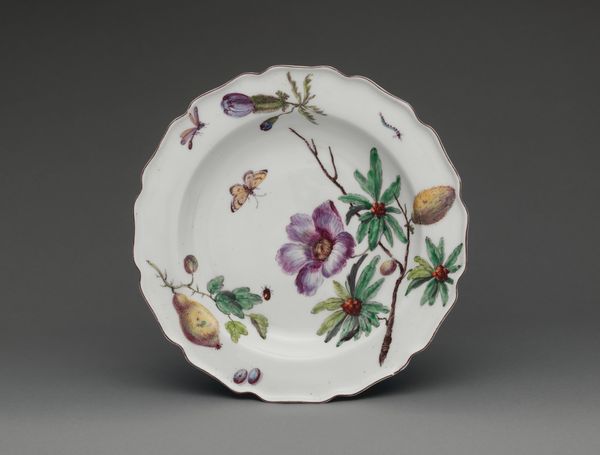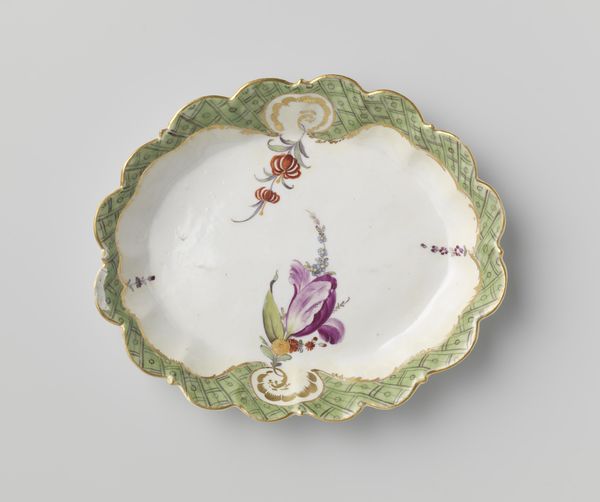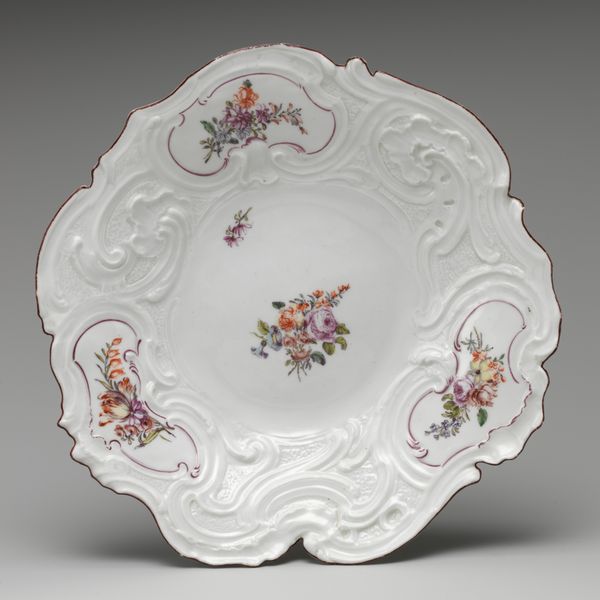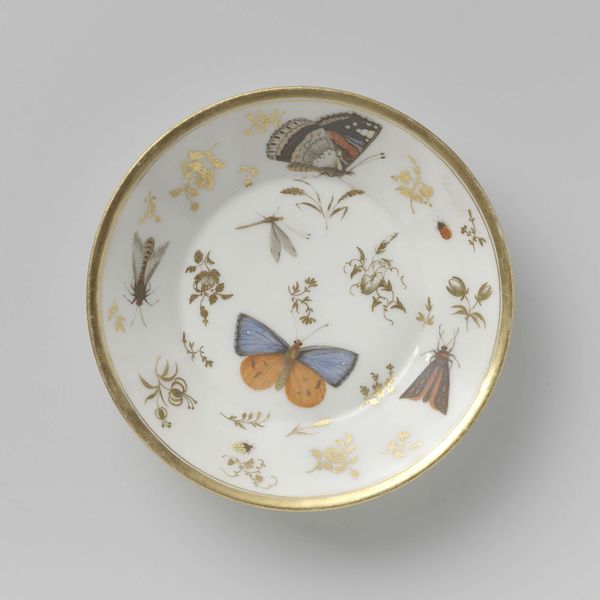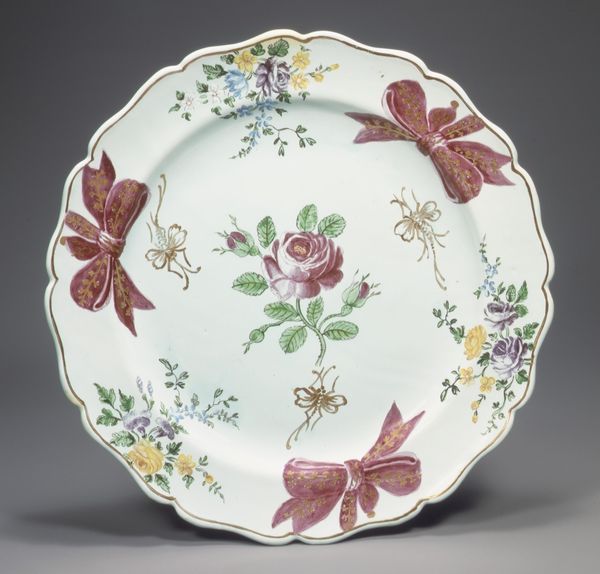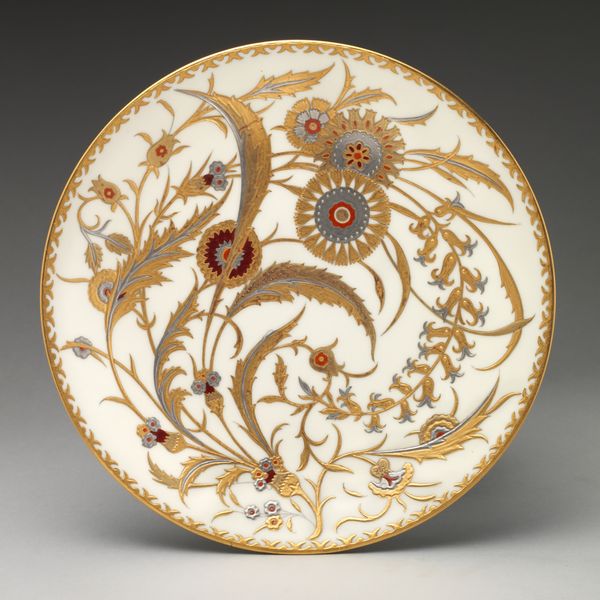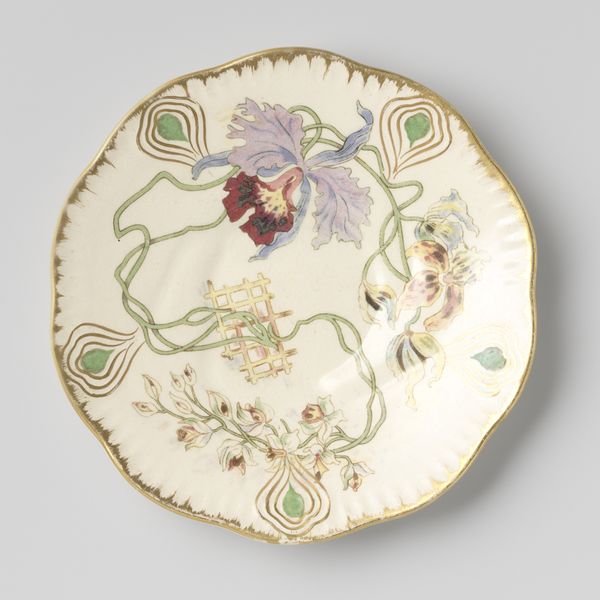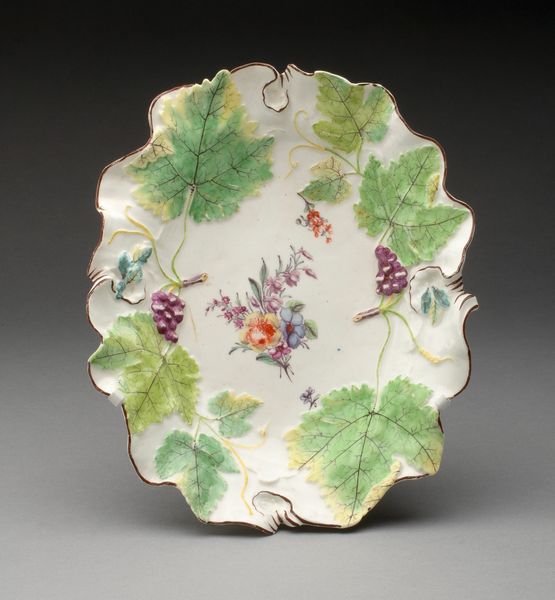
ceramic
#
ceramic
#
ceramic
#
united-states
#
decorative-art
Dimensions: Diam. 8 3/4 in. (22.2 cm)
Copyright: Public Domain
Curator: Let’s discuss this delicate ceramic plate by Ott and Brewer, dating between 1881 and 1890. Editor: My first thought is that the scene, with its lily pads and dragonflies, has such a peaceful, almost nostalgic aura. Curator: Absolutely. The lotus flower itself is rich in symbolism, particularly in Eastern traditions. It represents purity, spiritual awakening, and rebirth. And in Western art it signals an orientalist dreamscape. Editor: Right, but also let's look at this decorative scene materially. Think about the kaolin clay itself, likely sourced locally here in the States, shaped then fired under intense heat... Curator: You're pointing out that this decorative piece wasn't conceived in isolation, aren't you? Editor: Exactly. Ceramics, especially those produced during America’s Gilded Age, involved labor specialization, technological advancements in kilns, and trade networks connecting material extraction to final display in wealthy households. These mass-produced items created new consumer culture in this era. Curator: So the seemingly innocent decorative art contains layers of social meaning. We're reminded that domestic life is as equally fabricated as it is idealized. Editor: And consider the gold embellishments. Are they merely ornamental, or do they suggest the economic prosperity that fueled such artistic pursuits? Curator: A question for which there might not be an easy answer. But it reminds us that even the most serene image might be deeply embedded in the currents of society and cultural memory. Editor: Indeed. Analyzing the making as well as meaning illuminates this piece's complexity.
Comments
No comments
Be the first to comment and join the conversation on the ultimate creative platform.

